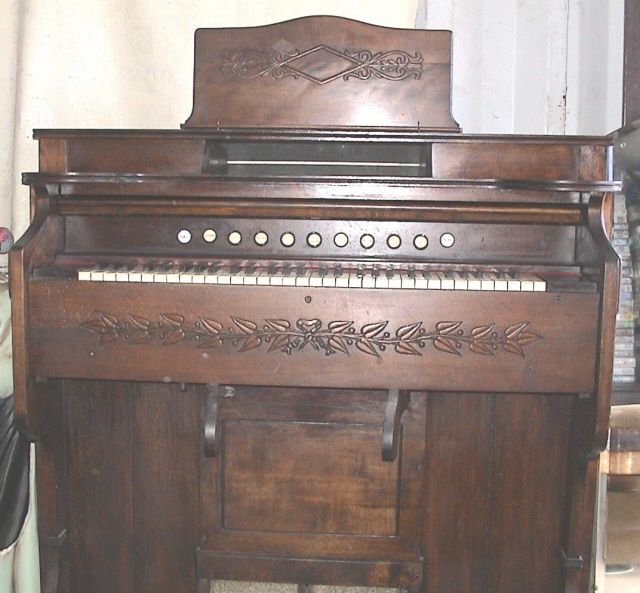Estey Organ Serial Numbers

List of Organs (Click on the Reference # to see a picture of the organ) Ref. # Trade Name City, State Year Serial # 13. Chase Organ Co. The name then became property of Fletcher Music Centers, Clearwater, FL, who sold electronic organs with that brand name. Serial numbers: 1850 - 400 1879.
Since this Estey cottage organ had serious moisture damage, much of the cabinet needs a more serious restoration. Someone had also sanded the finish off of some of the cabinet pieces, especially the top and the keyboard/music rack lid.
I don’t have any original finish to salvage here, so I decided to sand, re-stain, and finish the cabinet completely. I selected an English Walnut stain and I’m glad I did.
The back of the organ, which had moisture damage, severe gouges, and a haphazard original finish, now looks like it was originally a finished back. This instrument never had a finished back and the wood used for the back is of inferior quality to the rest of the cabinet. I am pleased with the way it looks. This is the way the back originally looked: And here is the same back, sanded, new stain applied, and finish coats applied: You can see the reflection of the garden pergola in the finish.
I have a final sanding and finish coat to apply and then it’s done! Now, on to reassembling the reed pan. Working on the reed pan, I removed the reeds. Someone had placed wooden shims under at least four of them: Having carefully removed the reeds, I then removed the supports for the keyboard. Now I am down to the one old rusty screw that just would not budge: After carefully working on it for a while, I finally got it. Now only the non-removable portion of the reedpan remains: There are several cracks in the reedpan that require repair: At this point I start the cleaning and light sanding.
However, I guess it wasn’t my day for sanding. Shortly into the process, I got a nasty splinter off the side of the reedpan. It went deep enough to where I couldn’t remove it myself (my doctor couldn’t remove it either the next day). It hurt like @#$%! So much for sanding and cleaning that day.
Continuing on with the disassembly, I documented everything about each piece that I removed: the order of removal, labeling, etc. Eventually all of the labeled components were stored in tidy storage boxes. I started with removing the drawknob linkages: There’s a lot more corrosion than I anticipated. Moving on after removing the drawknobs, their linkages, and nameboard, I get to the keyboard and then remove it: Now, I label all of the individual pitmans. Next, I remove the reed pan itself: There are a lot of moisture problems here. Install cydia package without dependencies.
Every screw was rusted and many were seized. There was evidence of mouse pee. I see a few cracks in the reed pan itself. I kept going and removed the outer and inner mutes: The mute hinges are brittle: and there is hardly any felt left: and look at the difference in color between a pallet valve and the reed pan: I’ve never seen shims under reeds before. There is one reed missing: the lowest C on the 4′ Flute. Uhoh, the reed pan is separating at the front: I don’t see cracks here, however: So I hope it won’t be difficult to square it back up: It’s amazing to compare the protected copper-covered linkage with the exposed corroded parts. Someone had a creative “repair” for this linkage: and here, is a “B” Now I am down to the lower action.